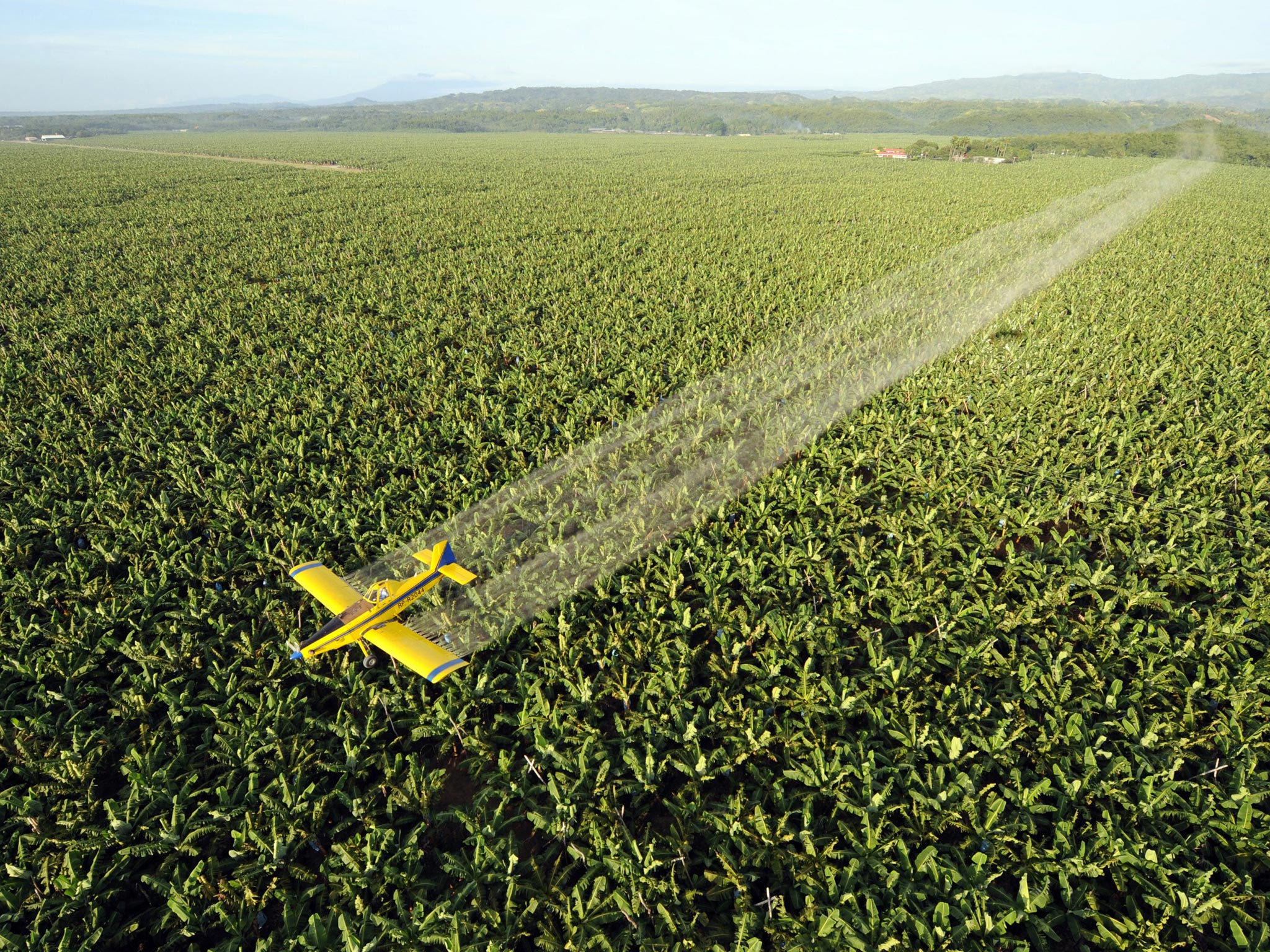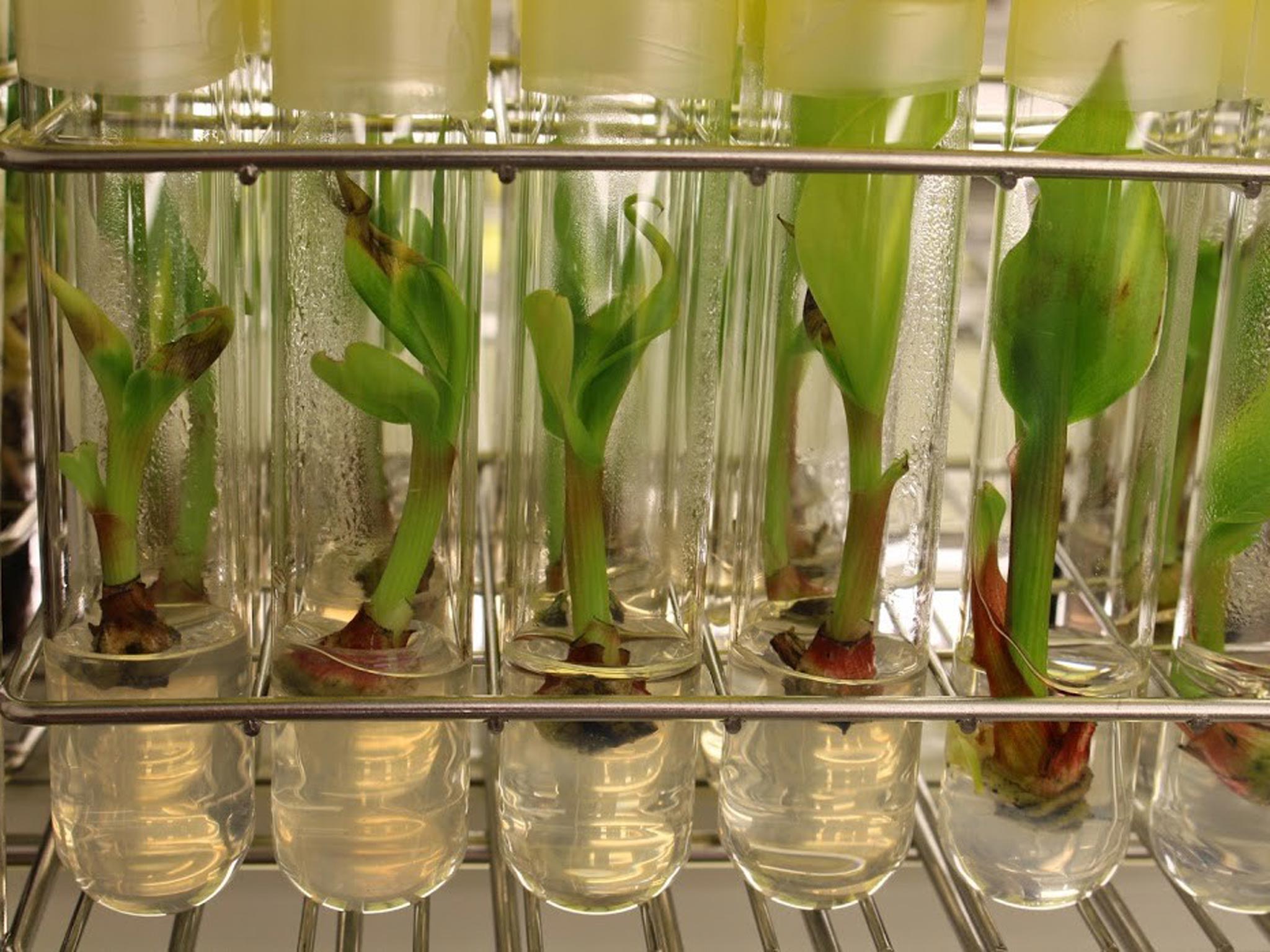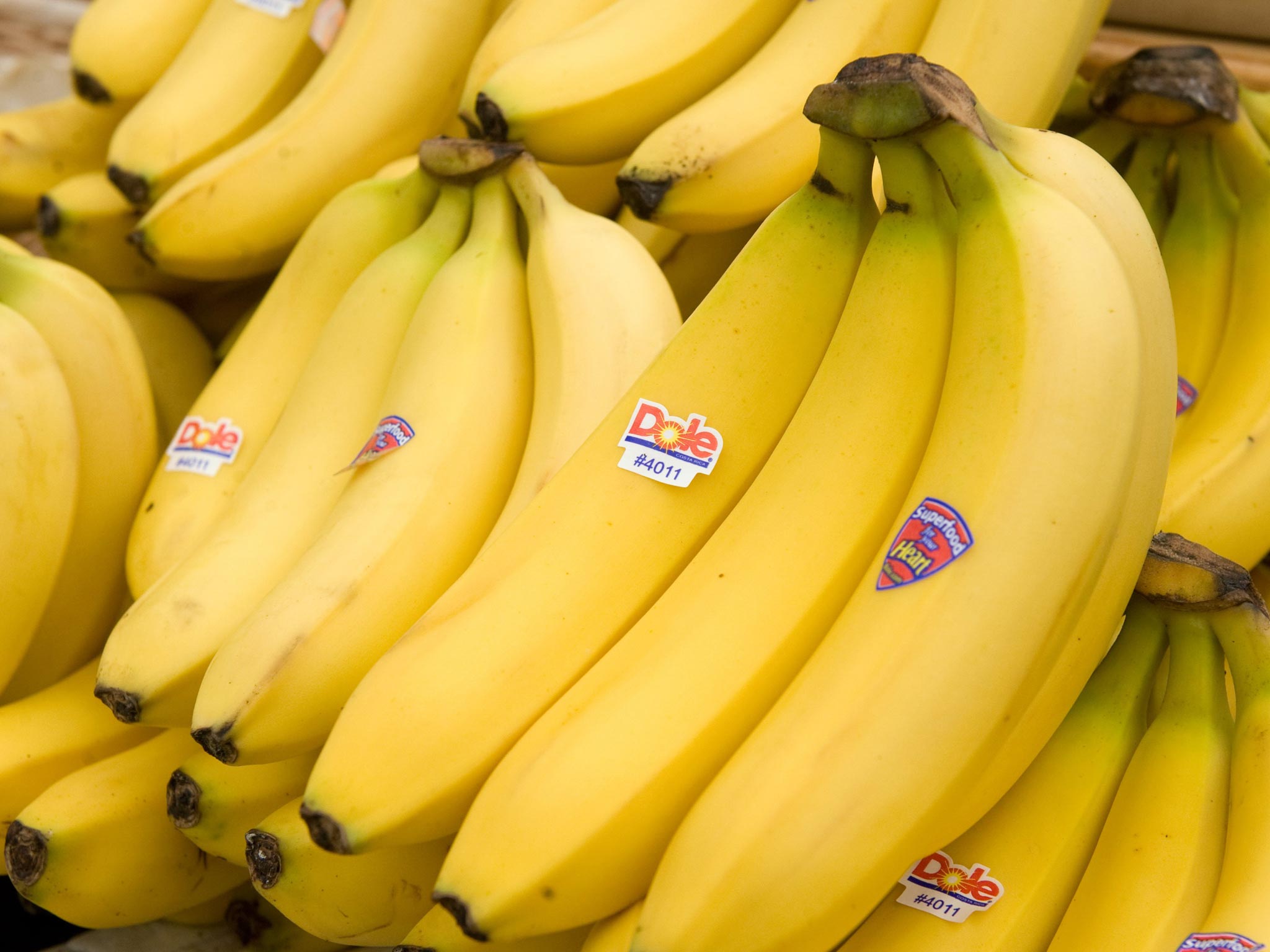‘Noah’s Ark’ of the fruit world where the banana seeds of 1,600 varieties are grown
Even if TR4 does its worst, there is still hope. Cahal Milmo visits Belgium’s World Banana Collection, home to thousands of varieties waiting to replenish the global supply

Your support helps us to tell the story
From reproductive rights to climate change to Big Tech, The Independent is on the ground when the story is developing. Whether it's investigating the financials of Elon Musk's pro-Trump PAC or producing our latest documentary, 'The A Word', which shines a light on the American women fighting for reproductive rights, we know how important it is to parse out the facts from the messaging.
At such a critical moment in US history, we need reporters on the ground. Your donation allows us to keep sending journalists to speak to both sides of the story.
The Independent is trusted by Americans across the entire political spectrum. And unlike many other quality news outlets, we choose not to lock Americans out of our reporting and analysis with paywalls. We believe quality journalism should be available to everyone, paid for by those who can afford it.
Your support makes all the difference.Behind a locked door in a basement on a Belgian university campus lie row after row of yellow-capped test tubes on brightly lit, refrigerated racks. Inside each of the 15,000 or so tubes sits a tiny, fragile green plant.
In space-age surroundings about as removed far from the jungles of Thailand or Malaysia, the farms of Ghana or Tanzania and the plantations of Costa Rica or Guatemala as it is possible to be - sits the world’s largest collection of a crop responsible for sustaining 410 million people - the banana.
The test tubes of the World Banana Collection - held as part of a collaboration between a research body, Bioversity International, the UN Food and Agriculture Organisation (FAO) and the Belgian government at Leuven University, near Brussels - hold seedlings from each of 1,400 different varieties of edible bananas and plantains painstakingly gathered from across the world to be preserved for humanity.
Each is bred and re-bred on a constant cycle to produce small “master plants” from which, if needed, millions of copies can be propagated to be returned to nature or horticulture.
But the collection, overseen by Professor Rony Swennen, one of the world’s leading banana scientists, has recently taken on a more vital purpose: Within its serried racks could lie the answers to the raft of diseases which threatens to decimate the global banana supply.
Early last year, workers on a commercial banana farm in Mozambique noticed a tell-tale yellowing of leaves on some of their plants. Within weeks the stems had started to collapse and by last December the worst fears of scientists had been confirmed – the worst of these diseases, Panama Disease Tropical Race 4 (TR4), had arrived in Africa.
Following confirmation of the outbreak, limited to a small number of fields, the plants were destroyed and a strict sanitary cordon placed around the farm in the hope it would stop the spread of the disease across Mozambique and beyond.
It is likely to be a forlorn hope.
TR4 is the natural born killer of the banana world, capable of wiping out entire plantations within two to three years and then spreading “sleeper” spores into the soil which will last for decades and decimate any new crop.

Once it takes hold, passing through the roots into the stems of the banana plant, the fungus effectively chokes it to death, blocking the paths through which water and nutrients pass. TR4 is so potent that it has earned the nickname “banana AIDS” and there is currently no proven cure.
Since it emerged in Malaysia and Indonesia in the 1990s, scientists and plant protection experts have battled to prevent the spread of TR4 from south east Asia to the world’s other banana-producing regions. In Malaysia, it wiped out a thriving export industry while in Indonesia it choked off the export trade before it could begin. It has also devastated crops in the Philippines and reached China.
But its appearance in Mozambique, at the southern end of a continent where the banana is one of the most important staple foods, opens a new front in the battle against TR4 which has set alarm bells ringing across the world, in particular at the Rome headquarters of the Food and Agriculture Organisation (FAO), the United Nations body whose goal is the defeat of hunger.
In a briefing obtained by The Independent, the FAO will this week warn that the disease poses a risk to “the global banana supply” and united action is needed by governments, the big banana producers and research bodies to prevent the spread of TR4, also known as Fusarium oxysporum cubense, and its grim implications for tropical countries where bananas are both a vital source of food and income.
The document states: “Virtually all export banana plantations… and also a considerable part of the bananas cultivated for local markets are vulnerable to this race [of Panama Disease].
“Once present in the soil the disease cannot be controlled. The social consequences of the fusarium wilt can be severe as bananas are an important source of food, income, employment and government revenues in many tropical countries.”
The scenario which is concerning the authorities and many scientists most is the spread of TR4 to Latin America, where at least 70 per cent of the bananas used for the global export trade, worth some $9bn (£5.4bn), are grown.
The export trade is dominated by a single variety, Cavendish, which was introduced in the 1950s after an earlier version of Panama Disease wiped out plantations growing Gros Michel, a sweeter, tastier banana considered vastly superior to its successor but unable to resist the fungus. It was the disappearance of the Gros Michel which inspired the song, “Yes, we have no bananas”.
The Cavendish proved resistant to the original versions of Panama and, though it was less palatable and bruised more easily than Gros Michel, it kept well and became the banana of choice for the big growing companies such as Fyffes and Chiquita (which last month announced a merger to create the world’s largest grower), Dole and Del Monte.
Today, some 95 per cent of bananas grown for export are Cavendish to meet the world’s insatiable demand for this nutritious fruit.
Some 17 million tonnes of Cavendish are traded internationally each year (up from 12m tonnes in 2001), making it the world’s most lucrative fruit. Americans eat more bananas than apples and oranges combined.
In cash terms, bananas are the most important export for Costa Rica, Ecuador, Panama and Belize, and in the top three for five other countries ranging from Colombia to Cameroon.
But now history is repeating itself and Panama Disease is once more on the march, only this time there is no new “Cavendish” waiting in the wings to replace the disease-susceptible variety. The world’s banana trade is based on billions of clones of the same plant which has no resistance to its fast-spreading fungal nemesis.

The multinational growing companies hope that the march of TR4 towards Latin America can be slowed or even halted by stringent quarantine and biological-control measures, despite proof in Jordan and Mozambique, where it is thought to have been transferred via plantation workers from the Philippines or Latin America, that it can now leap continents.
Experts agree that TR4’s destruction of Cavendish could take years or even decades to reach its zenith but warn Latin America has almost no chance of avoiding its grip.
Prof Swennen, who curates the banana collection - also known as the International Transit Centre - on behalf of Bioversity International, a global development research organisation, said: “This is a gigantic threat to the Cavendish industry.”
Gert Kema, an expert on Panama Disease at Wageningen University in the Netherlands, said: “It’s not a question of whether it will appear [in Latin America]. It’s a question of when.”
A contagion of fear is also spreading in Latin American countries themselves. Romano Orlich, Costa Rica’s former agriculture minister, said: “Should TR4 invade our plantations, we would lose $800m of export income. Misery, unemployment, drugs and delinquency would be the result. I’d better stop here as I will not be able to sleep from now on.”
According to scientists and development experts, the world is paying the price for allowing the international banana trade to become a vast monoculture, rigorously managed to provide uniform, perfect bananas to consumers in the developed world.
There are signs that another pest, a fungus called Black Sigatoka, which is prevented from spreading on commercial plantations by weekly pesticide spraying, may also be developing resistance.
But while first world consumers face at worst the threat of the disappearance of one item from their fruit bowls, banana disease has far more profound implications for those that rely on it for both income and food.
The vast majority of the 135 million tonnes of bananas grown each year are produced by small holders or subsistence farmers and used to either feed themselves or sold locally, funding additional purchases from food to school fees.
Bananas and plantains are the world’s fourth most important staple crop after rice, wheat and maize and some 410m people rely on them for between 15-32 per cent of their daily calories.
Ongoing work suggests TR4 affects many of the different, non-Cavendish banana varieties grown in Africa, Asia and the Caribbean. Other diseases - a virus called Bunchy Top which stops banana production and a bacterial infection, BXW - also pose a long-term risk to the crop in Africa.
According to Professor Randy Ploetz, the California-based disease expert who discovered TR4, between 80-85 per cent of all bananas grown by volume are at risk of destruction by the fungus.

He told The Independent: “There is a great need for additional research, especially on the development of new, TR4-resistant bananas. Unfortunately, we are years away from that objective.”
It is here that the test tubes sitting in a basement at the 589-year-old Leuven University come in.
It is more than likely that sitting within the chiller room sit banana varieties which could be inter-bred to offer natural resistance to TR4 or whose DNA could be tweaked to provide a genetically-modified fruit resistant to some, many or all of the pests plaguing global banana production.
Already, certain breeds of East African cooking banana, known as matoke, and plantains have been shown to grow in land in the Philippines previously infected by TR4. Researchers in Taiwan believe they have perfected a variant of Cavendish which could offer resistance to TR4 over a number of years, though a more long-term resistance is yet to be found.
But other argue that the problems posed by TR4 and other diseases are an opportunity to switch to a more sustainable model based on growing several banana varieties commercially rather than accepting the tyranny of a “Cavendish”.
According to Prof Swennen, the world has forgotten the sheer diversity of a fruit which can be red or blue, taste of apple or lime and grow in climates from the tropics to snowy hills in China.
He is pioneering work in Tanzania and Uganda which encourages farmers to harness methods such as growing bananas among nitrogen-fixing groundcover crops such as beans and under trees, massively increasingly yields and reducing disease.
He said: “There are about 300,000 plant species in the world and yet we use only about 100 to feed ourselves. There are around 2,000 varieties of cultivated banana but in the developed world we eat only one.
“If we could bring that diversity to our plates we would increase access to markets for developing countries and get away from the monoculture of the Cavendish banana.
“To reach the recommended daily amount of vitamin A, you need to eat 80 Cavendish bananas. I have varieties in the collection which would give you all your vitamin A from just two bananas. We should harness this potential.”
Join our commenting forum
Join thought-provoking conversations, follow other Independent readers and see their replies
Comments